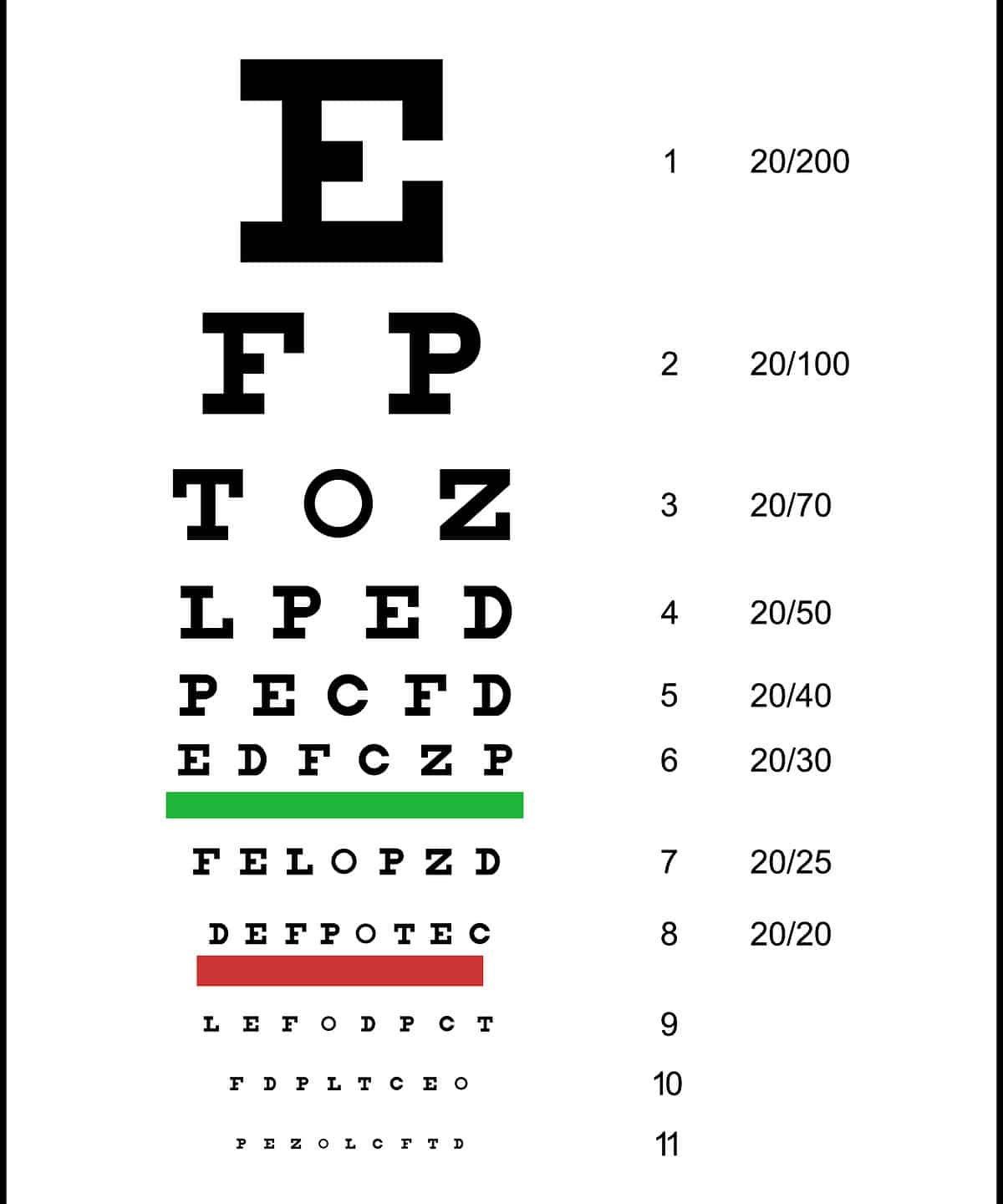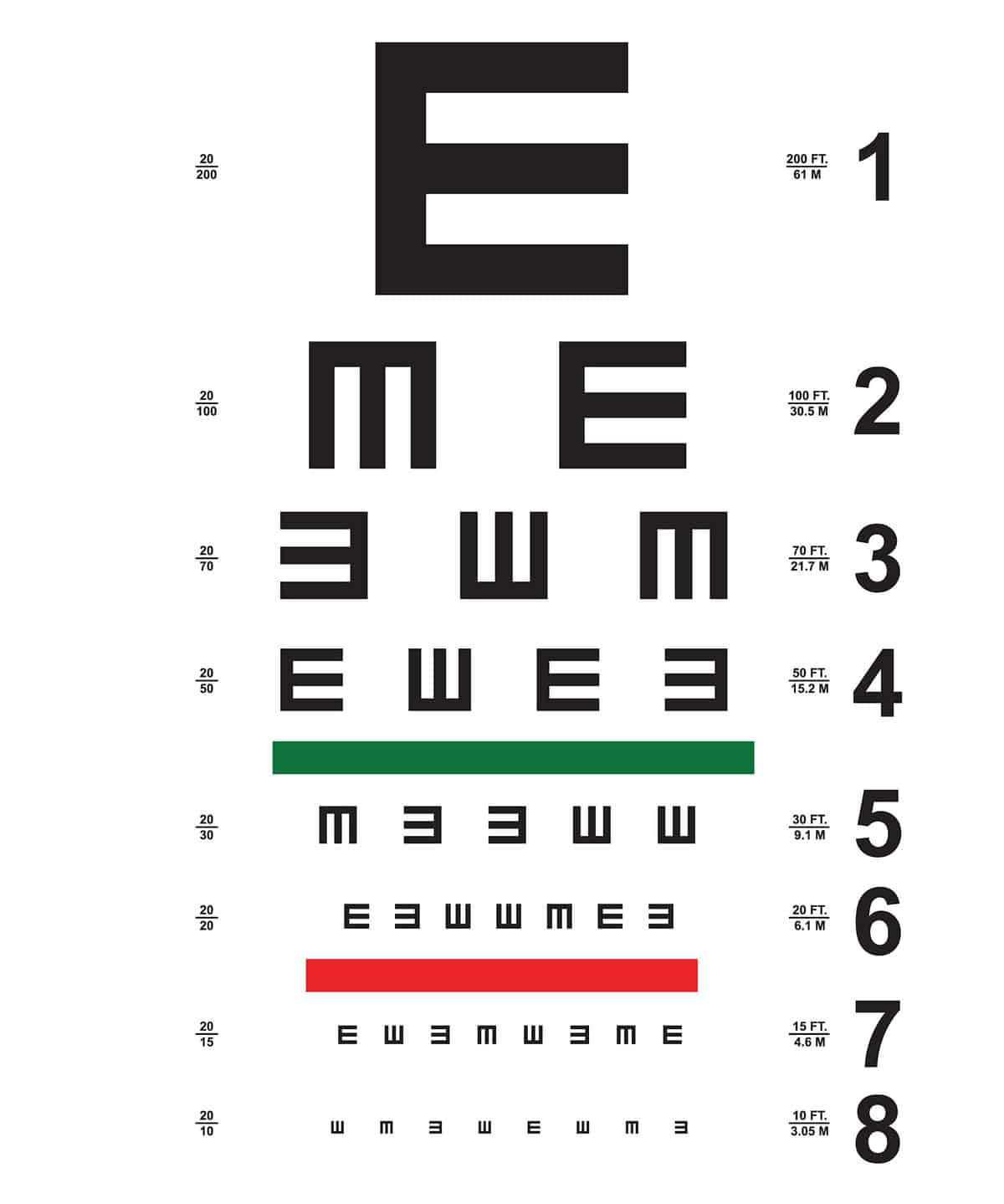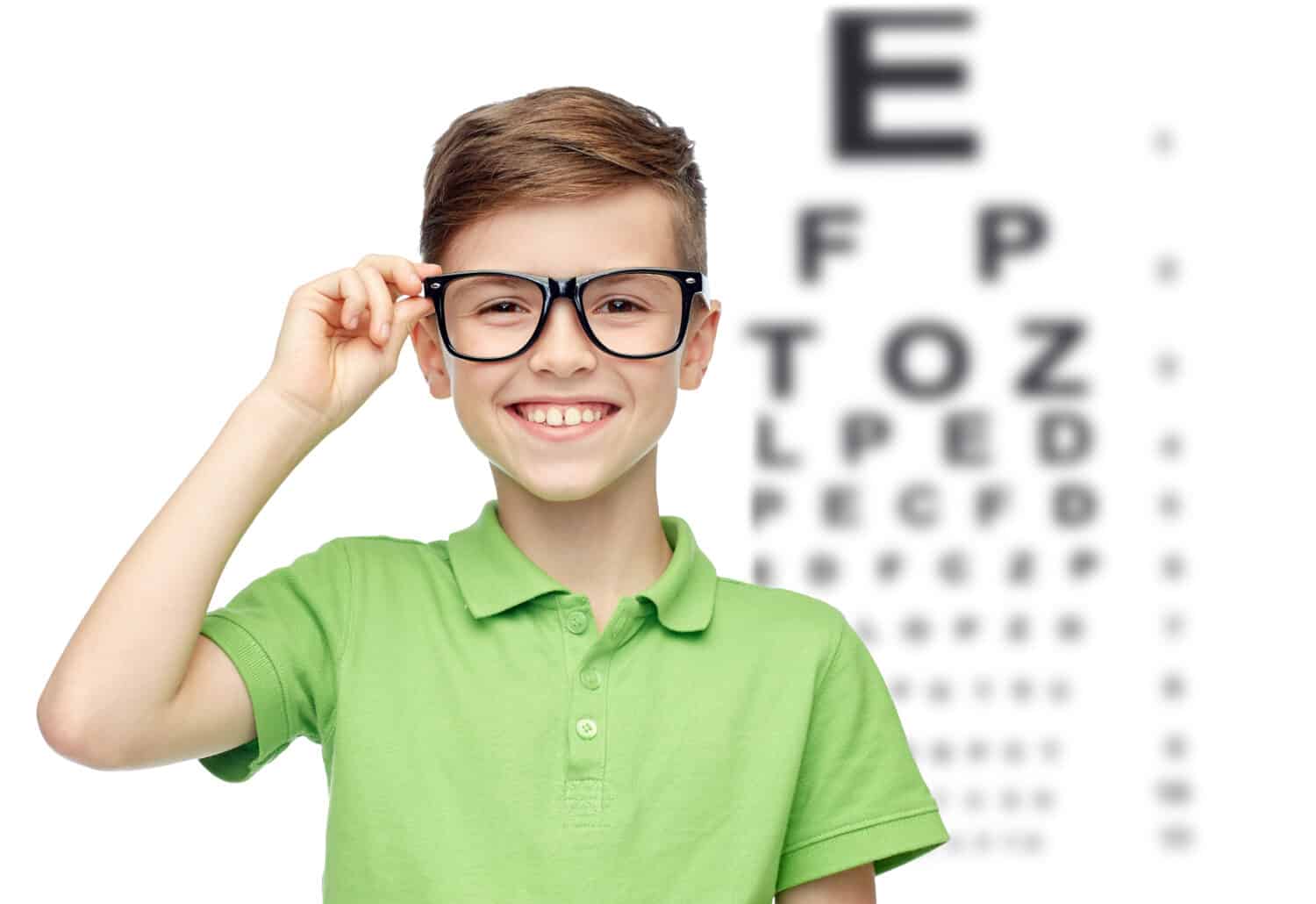If you’ve ever had your vision tested, you may have been asked to use an eye chart. As the doctor pointed to each line on the chart, you covered one eye and read each of the letters on each line, which got progressively smaller as you moved down the page. This eye chart used by physicians is known as the Snellen Eye Chart. Nowadays, it can be used as an at-home eye chart.
The Snellen Eye Chart displays 11 rows of capital letters. This chart, developed in the late 1800s, tests the sharpness of your vision. Being able to read the smallest line usually indicates you have 20/20 vision.
Despite continued advancement in technology, the eye chart is still a widely-used tool in doctors' offices. Let’s take a look at the at-home eye chart and how you can use it to test your vision.

©octopusaga/Shutterstock.com
How to Use an Eye Chart to Check Your Vision
The Snellen eye chart has become so well-known that you can even purchase decor online that has the letters from the eye chart printed on them. Although there are other methods of testing vision popping up in some doctor’s offices, the eye chart still plays a major role in vision screening.
With this at-home eye chart, you can test your vision with some basic materials. Before you get started, make sure you have the following materials on hand:
- Something to cover one eye
- A printed version of the eye chart
- Tap or a tack to hang the testing chart
- A tape-measure
- Someone to help you
When you print out the eye chart to use at home, the top letter’s height should be a little under an inch. Once you have your chart, here’s how to test your vision:
- Hang the chart 10 feet away from you on the wall
- Stand or sit with the chart at eye-level
- Cover one eye with your hand or another object that completely blocks your vision
- Have someone point to each line while you read the letters out loud
- Keep moving on to the next line until you can no longer comfortably read each letter
- The person helping should stop when you fail to identify at least 50% of the letters on a particular line
- Switch to the other eye and repeat the process
How to Test a Child’s Vision
If you decide to use the at-home eye chart to test your child’s vision, you can follow the same directions. Your child may need some help covering their eye entirely, and you might need to help to keep them from peeking. If necessary, you can hold the cover over their eye or have someone else hold it for them.
There are a few different eye charts if your child can’t read or identify letters yet. The Tumbling E Chart, for example, is a similar concept, but instead of having different letters, it has only the letter E facing different directions.

©attaphong/Shutterstock.com
When using the Tumbling E Chart, tell your little one you’re going to play a game. Then, show them how to hold up three fingers to represent the “E” and which direction it’s pointing. Just like you would with the Snellen Eye Chart, point to each row and let your child identify which way each letter is pointing. Stop once you get to a line where they incorrectly identify at least half of the line.
When Should Your Child Have Their Vision Tested?
Using an eye chart at home doesn’t replace a visit to the eye doctor, but you may wonder when your child needs their first vision test. Early eye exams are a great way to prevent any issues later on.
Even if your child can’t read yet, an ophthalmologist can detect and treat eye issues in young children. It’s recommended that children have their first eye exam by 6 months old to ensure their eyes are developing properly.
What Do the Results of the Eye Test Mean?
When you’re using the at-home chart to test your vision, each line represents a different level of visual acuity or sharpness of vision. An adult without any vision problems should be able to read the 20/20 line. 20/20 vision means you can read a letter at 20 feet that most people would be able to read at that distance.
When it comes to children’s vision, it works a little bit differently since their eyes take some time to fully develop. A child should be able to read the 20/40 line between 3 to 4 years old and the 20/30 line by age 5. Older or school-age children should be able to read the 20/20 line if they don’t have any vision problems.
Many adults don’t have 20/20 vision, so what happens if you can’t read that line on the eye chart? The line that you stopped at is the line that determines your visual acuity. For example, if you identified at least half of the 20/30 line incorrectly, you have 20/30 vision. It’s estimated only around 35% of adults have 20/20 vision with glasses or contacts.
After using the at-home eye chart, if you or your child has abnormal results, it’s important to make an appointment with an eye doctor to have your vision tested. It’s especially important to have your child’s vision tested before they start school as well.

©Ground Picture/Shutterstock.com
History of the Eye Chart
The history of the eye chart goes back to the 1800s. It was created by a Dutch doctor named Hermann Snellen. It became popular since it was an easy-to-use and portable tool for testing vision. Even though other physicians have developed different types of eye charts over the years, the Snellen Eye Chart still remains the most popular choice for doctors.
One of the concerns about the Snellen Chart is the design. Each line contains a different number of letters and the space between the lines is inconsistent. Because of that, there’s a question of how accurate the reporting is. In 1976, two Australian doctors created a similar chart named the Bailey-Lovie Chart that addressed the issues with the previous design. The Bailey-Lovie chart is seen by some as more accurate. Still, the Snellen Eye Chart is the standard used by optometrists.
Takeaway
Your vision is an important part of your everyday life. Even though 20/20 vision isn’t as common as you think, there are many advances in technology now that allow someone to correct their vision. Whether it’s through corrective lenses or laser eye surgery.
This at-home eye chart can give you a good idea of how your vision is doing. However, it’s still important to schedule an annual exam with your eye doctor or make an appointment right away if you have any concerns or new vision issues.
The image featured at the top of this post is ©Ground Picture/Shutterstock.com.
